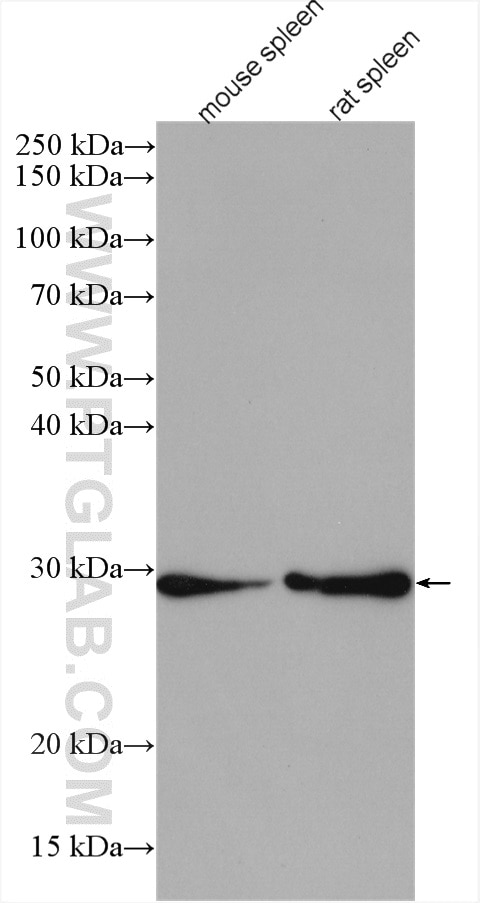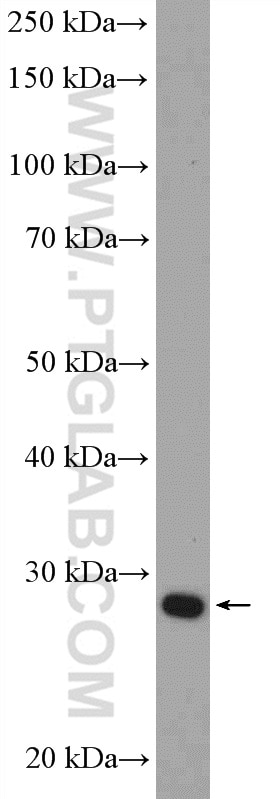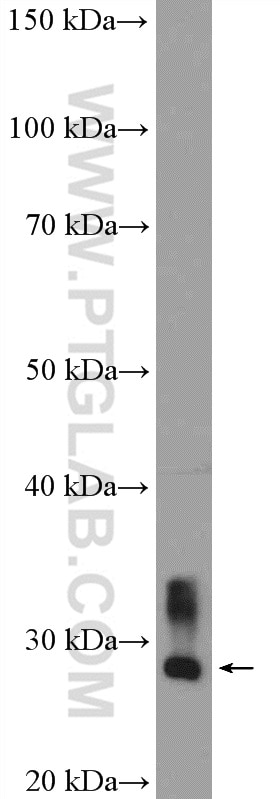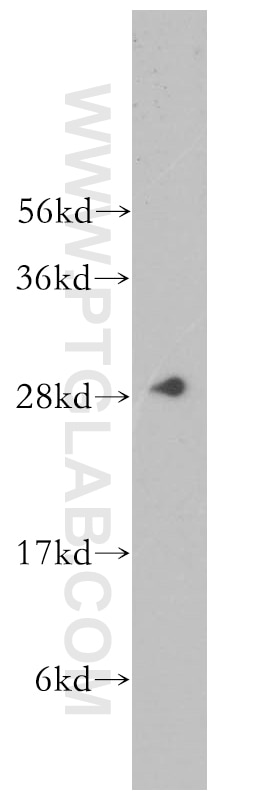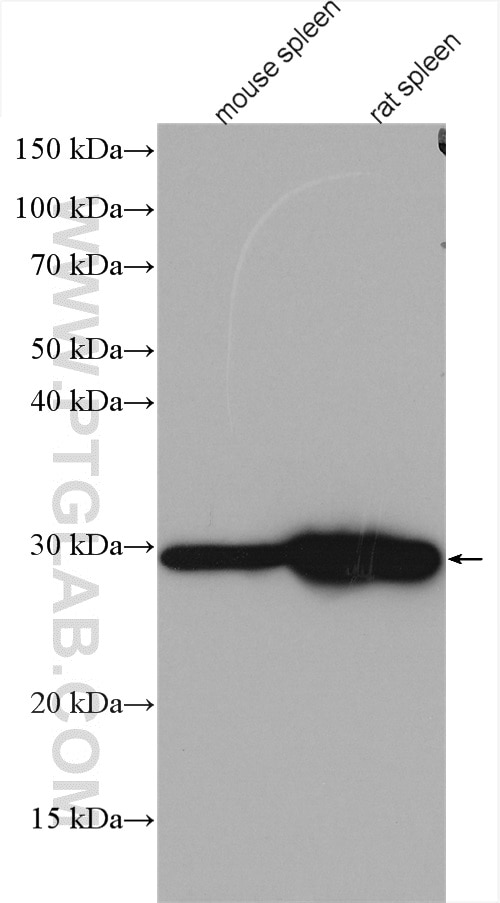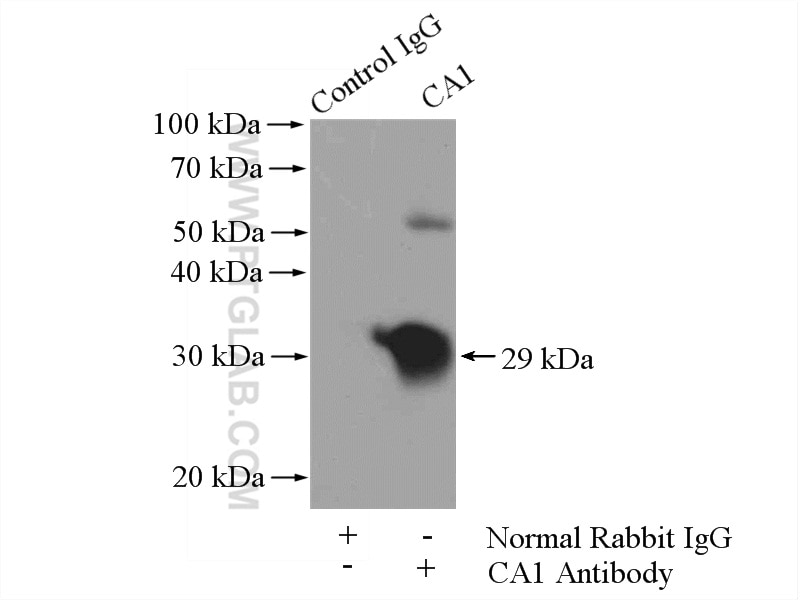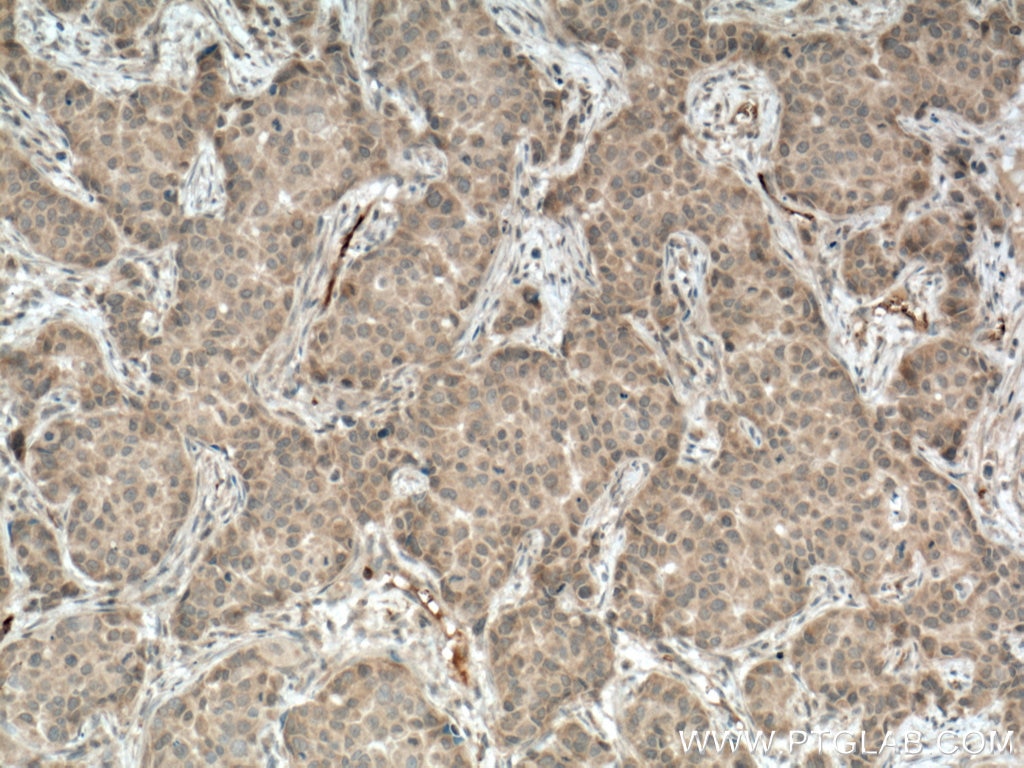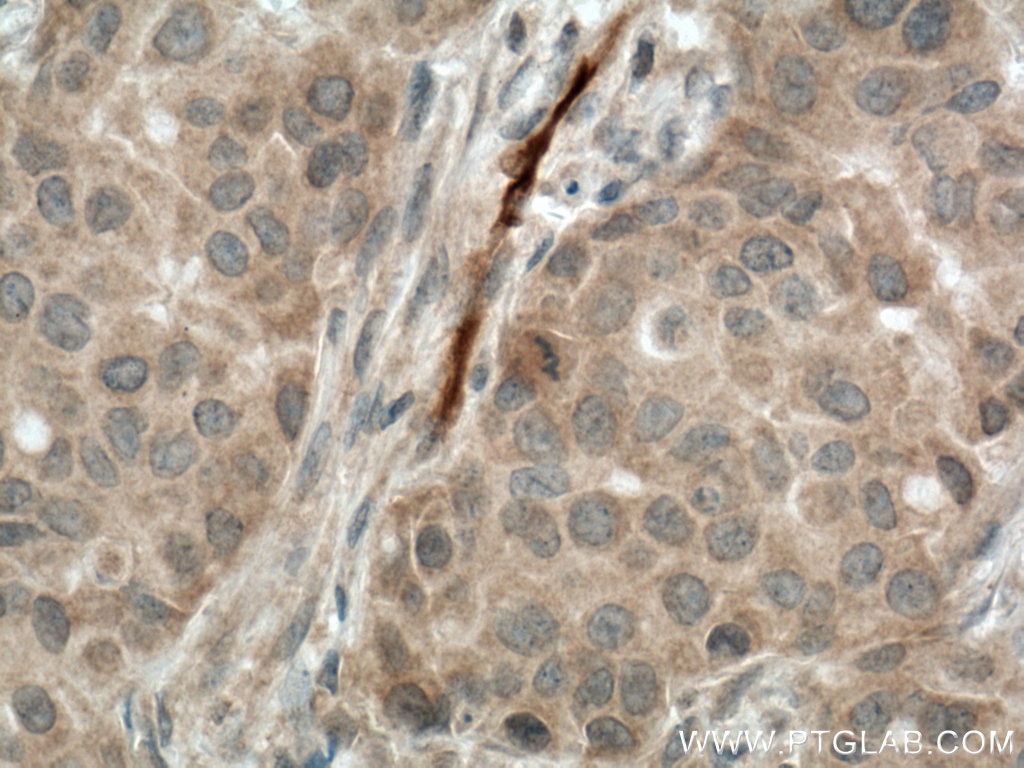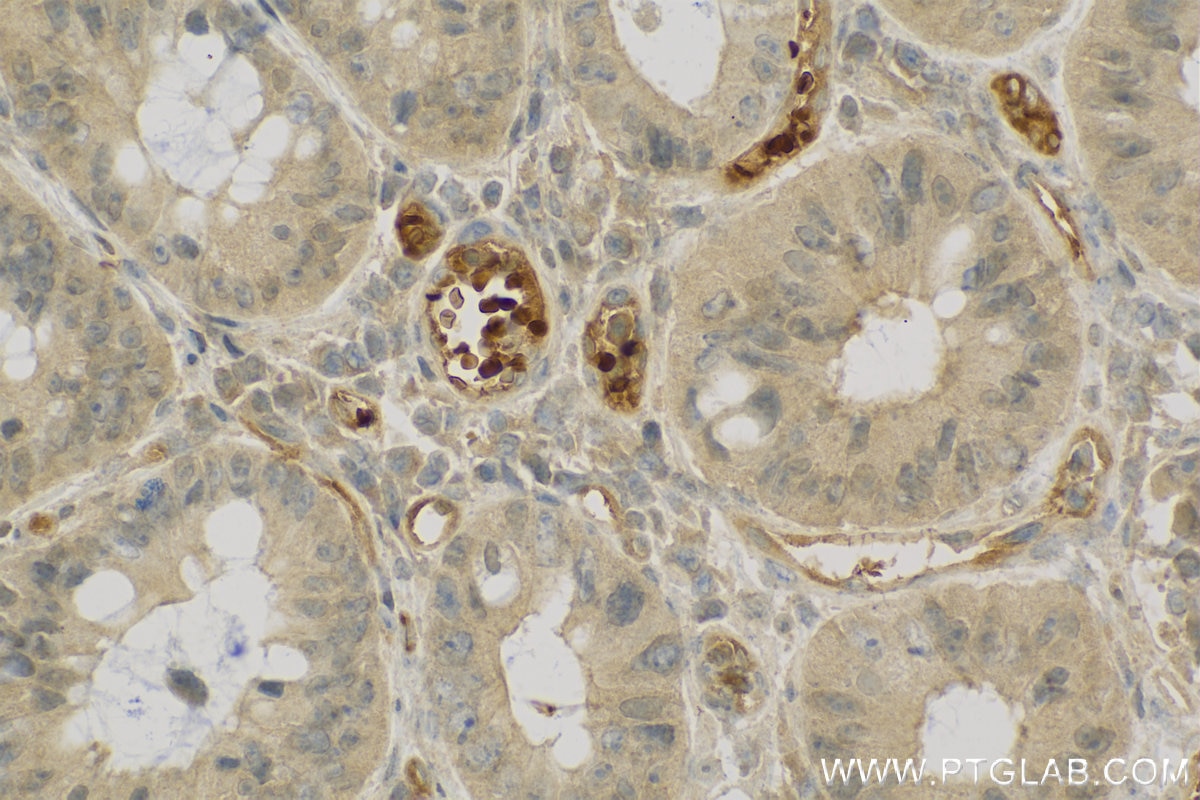Tested Applications
| Positive WB detected in | mouse spleen tissue, Jurkat cells, rat spleen tissue |
| Positive IP detected in | K-562 cells |
| Positive IHC detected in | human breast cancer tissue, human colon cancer tissue Note: suggested antigen retrieval with TE buffer pH 9.0; (*) Alternatively, antigen retrieval may be performed with citrate buffer pH 6.0 |
Recommended dilution
| Application | Dilution |
|---|---|
| Western Blot (WB) | WB : 1:500-1:3000 |
| Immunoprecipitation (IP) | IP : 0.5-4.0 ug for 1.0-3.0 mg of total protein lysate |
| Immunohistochemistry (IHC) | IHC : 1:50-1:500 |
| It is recommended that this reagent should be titrated in each testing system to obtain optimal results. | |
| Sample-dependent, Check data in validation data gallery. | |
Published Applications
| KD/KO | See 1 publications below |
| WB | See 7 publications below |
| IHC | See 1 publications below |
| IF | See 4 publications below |
| IP | See 1 publications below |
Product Information
13198-2-AP targets Carbonic anhydrase 1/CA1 in WB, IHC, IF, IP, ELISA applications and shows reactivity with human, mouse, rat samples.
| Tested Reactivity | human, mouse, rat |
| Cited Reactivity | human, mouse, rat |
| Host / Isotype | Rabbit / IgG |
| Class | Polyclonal |
| Type | Antibody |
| Immunogen |
CatNo: Ag3932 Product name: Recombinant human CA1 protein Source: e coli.-derived, PGEX-4T Tag: GST Domain: 1-261 aa of BC027890 Sequence: MASPDWGYDDKNGPEQWSKLYPIANGNNQSPVDIKTSETKHDTSLKPISVSYNPATAKEIINVGHSFHVNFEDNDNRSVLKGGPFSDSYRLFQFHFHWGSTNEHGSEHTVDGVKYSAELHVAHWNSAKYSSLAEAASKADGLAVIGVLMKVGEANPKLQKVLDALQAIKTKGKRAPFTNFDPSTLLPSSLDFWTYPGSLTHPPLYESVTWIICKESISVSSEQLAQFRSLLSNVEGDNAVPMQHNNRPTQPLKGRTVRASF Predict reactive species |
| Full Name | carbonic anhydrase I |
| Calculated Molecular Weight | 261 aa, 29 kDa |
| Observed Molecular Weight | 29 kDa |
| GenBank Accession Number | BC027890 |
| Gene Symbol | CA1 |
| Gene ID (NCBI) | 759 |
| RRID | AB_2275041 |
| Conjugate | Unconjugated |
| Form | Liquid |
| Purification Method | Antigen affinity purification |
| UNIPROT ID | P00915 |
| Storage Buffer | PBS with 0.02% sodium azide and 50% glycerol, pH 7.3. |
| Storage Conditions | Store at -20°C. Stable for one year after shipment. Aliquoting is unnecessary for -20oC storage. 20ul sizes contain 0.1% BSA. |
Background Information
CA1(Carbonic anhydrase 1) is also named as CAB and belongs to the alpha-carbonic anhydrase family, which may reside in cytoplasm, in mitochondria, or in secretory granules, or associate with membranes in cell. It forms a large family of genes encoding zinc metalloenzymes of great physiologic importance. Extracellular CA1 mediates hemorrhagic retinal and cerebral vascular permeability through prekallikrein activation(PMID:17259996).
Protocols
| Product Specific Protocols | |
|---|---|
| IHC protocol for Carbonic anhydrase 1/CA1 antibody 13198-2-AP | Download protocol |
| IP protocol for Carbonic anhydrase 1/CA1 antibody 13198-2-AP | Download protocol |
| WB protocol for Carbonic anhydrase 1/CA1 antibody 13198-2-AP | Download protocol |
| Standard Protocols | |
|---|---|
| Click here to view our Standard Protocols |
Publications
| Species | Application | Title |
|---|---|---|
Acta Neuropathol Commun Upregulation of carbonic anhydrase 1 beneficial for depressive disorder
| ||
J Ginseng Res Ginsenoside Rg1 attenuates mechanical stress-induced cardiac injury via calcium sensing receptor-related pathway | ||
FASEB J Loss of interleukin-10 receptor disrupts intestinal epithelial cell proliferation and skews differentiation towards the goblet cell fate. | ||
J Inflamm Res M1-Type Macrophages Secrete TNF-α to Stimulate Vascular Calcification by Upregulating CA1 and CA2 Expression in VSMCs | ||
Am J Physiol Lung Cell Mol Physiol Carbonic anhydrase and soluble adenylate cyclase regulation of cystic fibrosis cellular phenotypes. | ||
Front Pharmacol Calcium Sensing Receptor-Related Pathway Contributes to Cardiac Injury and the Mechanism of Astragaloside IV on Cardioprotection. |
Reviews
The reviews below have been submitted by verified Proteintech customers who received an incentive for providing their feedback.
FH Brittany (Verified Customer) (09-27-2019) | Using the CA-1 primary antibody with mouse colon scrapes yielded very clean bands with western blotting. Immunofluorescence also gave a fairly clean, detectable signal, with CA-1 showing up along the brush border in mouse colon tissue. There were some cells that stained more intracellularly, and unsure if that was non-specific binding of the antibody, or another cell type other than colonocytes that expresses CA-1 intracellularly.
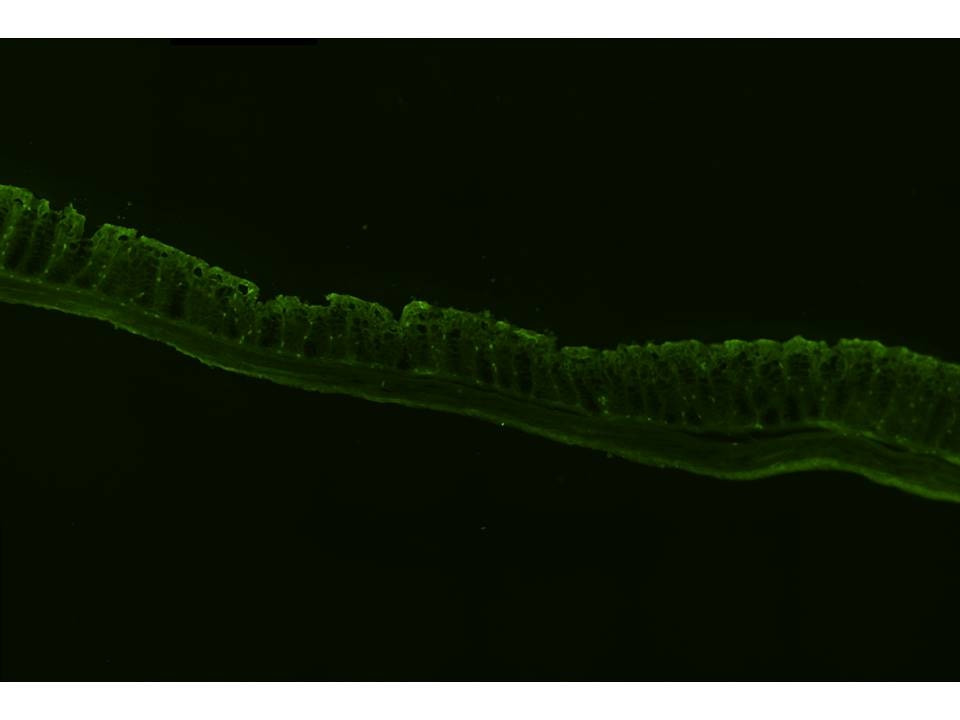 |
